Welcome | Registration | Program | Speaker Bios and Abstracts | Abstracts and Digital Posters | Hotel | Sponsors
2026 Meeting Speaker Bios and Abstracts
Team ABC
German Albertini
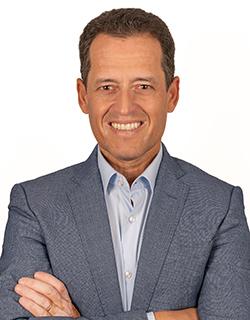
Biography:
Specialization in Prosthodontics and Implants (University of Buenos Aires).
Associate professor of the University of Buenos Aires.
ITI Speaker and Fellow
International speaker and author of scientific publications
Diego Bechelli
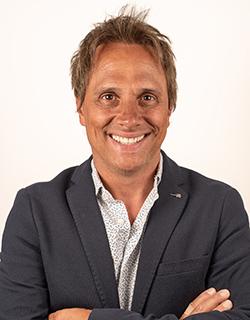
Biography:
Specialization in Periodontics (Maimonides University).
Associate professor of the University of Buenos Aires.
ITI Speaker and Fellow. Chairman of ITI Section Argentina & Uruguay.
International speaker and author of scientific publications
Anibal Capusotto
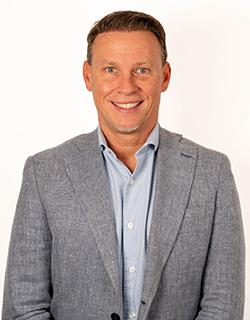
Biography:
Specialization in Periodontics (Asociacionismo Odontológica Argentina).
Specialization in Prosthodontics and Implants (University of Buenos Aires).
Head professor of Comprehensive Dentistry Department at the University of Buenos Aires.
PhD from the University of Buenos Aires
International speaker and author of scientific publications
Presentation Title: The Esthetically Guided & Occlusally Protected Protocol Approach in Interdisciplinary Rehabilitation
The lecture will focus on a predictable integration between esthetic and occlusal aspects, based on an interdisciplinary, conservative and digital approaches with the aim of treating wear patients. A detailed protocol is described and complemented with a step-by-step clinical approach based on 20 years of group experience in the field of interdisciplinary adhesive oral rehabilitation.
Learning Objectives:
- Establish a predictable sequence of planning and execution with a comprehensive risk assessment
- Incorporate digital tools to improve diagnosis and predictability of every treatment step
- Highlight the importance of VDO managing to take advantage of generated space for a conservative tooth preparation
Nitzan Bichacho
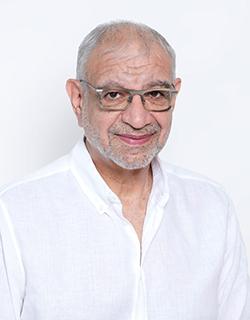
Biography:
Prof. Nitzan Bichacho, D.M.D. is a Professor of Prosthodontics at the Faculty of Dental Medicine, Hebrew University and Hadassah, Jerusalem, Israel, where he graduated in 1984 .
He is a Past President and Life Member of the European Academy of Esthetic Dentistry (EAED) and serves on the editorial boards of leading international dental journals .
Over the past four decades, he has developed restorative and prosthetic techniques, as well as implant systems, that are implemented in clinical practice worldwide .
Prof. Bichacho lectures and publishes internationally on dental implant therapy, fixed prosthodontics, interdisciplinary treatments, and esthetic dentistry .
His private practice, Bichacho Clinic in Tel Aviv, focuses on esthetic-oriented interdisciplinary treatments, working in collaboration with world renowned specialists and master dental technicians.
Presentation Title: Esthetic Implant Supported Restorations- Dealing with Challenges
In order to achieve a natural-looking result of artificial implant restorations, one must analyze the operative site and plan for a long-term healthy integration of the restorative complex and the implant fixture within the surrounding living tissues. At the smile zone our primary goal is also to obtain a natural-looking peri-implant soft tissue embracing a natural-looking functioning crown. The accumulated insights over the last 40 years on bone and tissue response (and alterations) around implants, enable biologic-based implementation of different surgical and restorative approaches, so that the abutment-crown complex has more chances to blend in with the surrounding tissue and the dentition in complete health and harmony. In this presentation, surgical and restorative approaches will be explained through clinical cases, to enable a comprehensive understanding of the present limitations and the various options available today to maximize the successful results of implants-based restorations, especially at the smile zone.
Rebecca Bockow
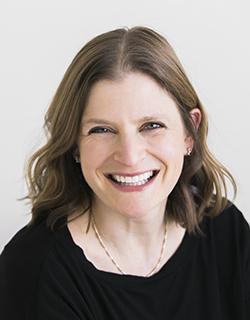
Biography:
Dr. Rebecca Bockow received her dental degree from the University of WA School of Dentistry. Upon graduation, Dr. Bockow practiced as a restorative dentist in Seattle, WA. In 2013, she completed her dual training in both Orthodontics and Periodontics from the University of Pennsylvania School of Dental Medicine, where she also earned a Masters in Oral Biology.
Dr. Bockow is a board-certified orthodontist and periodontist. She is a resident faculty member at Spear Education, and lectures to audiences internationally on topics including interdisciplinary treatment planning, airway and sleep disorders, skeletal growth and development, surgical treatment planning, and skeletal expansion with MARPEs.
Dr. Bockow maintains a private practice in Seattle and Bellevue, limited to orthodontics.
Presentation Title: A Fresh Look at the Gummy Smile
We have all seen patients with “Gummy Smiles.” Have you ever wondered how this occurred? What were the contributing factors early in growth and development that led to this unique anatomic feature? A gummy smile is not just an aesthetic concern, but also leads to compensations and breakdown.
We will delve into the etiology of a gummy smile – starting at infancy and early childhood. We will investigate contributing factors and compensations that occur over one’s life that lead to the development of a gummy smile. Once established, we will also discuss inherent compensations that patients make because of their particular growth pattern and the potential deterioration that can occur.
Finally, we will consider interventions for gummy smile patients of all ages. We will explore treatment options for early childhood, adolescents and teens, and adults.
Learning Objectives:
- An appreciation for the contributing factors that lead to the development of a gummy smile
- An understanding of the compensations that result from a gummy smile skeletal growth pattern
- Treatment planning strategies for patients of all ages with a gummy smile
Tali Chackartchi
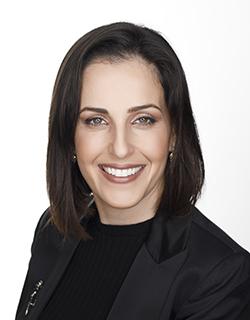
Biography:
Tali Chackartchi graduated in dentistry in 2002. Completed a post-graduate program in Periodontology at the Department of Periodontology, Hadassah & Hebrew University Faculty of Dental Medicine in 2008. EFP accredited specialist since 2009.
In 2009 received a 1-year scholarship to expand her education in implantology from the “Staub Foundation” in the G.Niznick Oral Implant Center.
Currently serves as a Senior Instructor in the Department of Periodontology at the Hadassah & Hebrew University in Jerusalem, ISRAEL.
Her clinical activity is dedicated to periodontology and implantology.
Since 2006, involved in the development, research and clinical work with different computer supported implant planning software’s and guided surgery kits. Dr. Chackartchi shares her experience in international lectures and hands-on courses.
Dr. Chackartchi is a member of the Post Graduate examination committee, a member of the expert committee and board of ‘Osteology’ foundation and Israeli ambassador to the EAO and EADD. Currently president elect of the executive committee of the EFP.
Tali Chackartchi is a Past President of the Israeli Society of Periodontology and Osseointegration.
Presentation Title: Beyond Osseointegration: The Clinician’s Role in Long-Term Tissue Stability
Successful implant therapy extends far beyond the achievement of osseointegration. True long-term success depends on the clinician’s ability to anticipate, design, and maintain harmony between biological and biomechanical factors that preserve both soft and hard tissue stability. This lecture will examine how careful diagnosis, biologically driven and prosthetically guided implant positioning, and evidence-based decision-making can prevent man-made complications that compromise esthetics and longevity. Through clinical examples and discussion, participants will explore how diagnostic, surgical, and restorative choices influence peri-implant tissue health, emphasizing that the clinician’s planning ultimately defines the outcome. Practical insights will be shared on pre-planning workflows that integrate biology, biomechanics, and esthetics for predictable, sustainable implant success.
Learning Objectives
- Recognize the clinician’s pivotal role in shaping long-term biological and esthetic outcomes around implants.
- Understand the interplay between biological and biomechanical parameters that determine peri-implant soft and hard tissue stability.
- Identify common, preventable complications arising from insufficient diagnosis, planning, or execution.
- Apply structured, evidence-based pre-planning principles that integrate biological and biomechanical considerations for predictable outcomes.
- Evaluate clinical case examples demonstrating how early, comprehensive planning can prevent complications and ensure long-term tissue stability.
2026 APS Golden Medallion Awardee
Mauro Fradeani
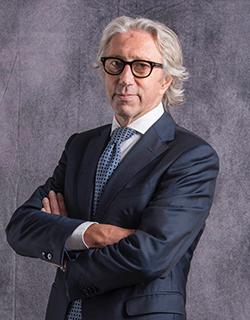
Biography:
Past President of EAED - European Academy of Esthetic Dentistry and Past President of AIOP - Accademia Italiana di Odontoiatria Protesica, he has served as Visiting Associate Professor in Prosthetics at Louisiana State University - New Orleans (USA). Active Member of The American Academy of Esthetic Dentistry and Life Member of The American Academy of Fixed Prosthodontics, he is Founder and Director of ACE Institute and of Fradeani Education.
He has been a member of the Editorial Board of Practical Procedures & Aesthetic Dentistry (PPAD), an Associate Editor of The International Journal of Esthetic Dentistry (IJED) and member of the Editorial Advisory Board of the Journal of Esthetic and Restorative Dentistry (JERD).
He is the author of the book “Esthetic Rehabilitation in Fixed Prosthodontics” translated into 12 languages, Vol 1 “Esthetic Analysis” and Vol 2 "Prosthetic treatment: a systematic approach to esthetic, biologic and functional integration", published by Quintessence International.
He runs a private practice limited solely to prosthetics on natural dentition and on implants in Pesaro (Italy).
Presentation Title: The combination of strategic factors for a successful prosthetic rehabilitation
Some esthetic and functional parameters can significantly affect the outcome of a prosthetic rehabilitation. Properly addressing those factors and combining them with the application of minimally invasive prosthetic procedures (MIPPs) will undoubtedly facilitate the achievement of a predictable and successful result.
A careful analysis of the facial, dento-labial and phonetic parameters is crucial before embarking upon an anterior or a full-mouth rehabilitation, however the clinician should never underestimate the importance of the function as it represents the starting point for achieving optimal esthetics. Positioning the mandible of the patient in CR according to the reorganization approach is highly advisable when an occlusal modification is required.
When restoring full arches, the alteration of the VDO is a key factor that leads the clinician to avoid invasive occlusal preparations. The maintenance of a sufficient quantity of enamel reveals to be ideal for the bonding procedure of veneers, full-veneers, buccal-occlusal veneers and table tops, even in presence of very reduced ceramic thickness.
Learning Objectives:
- Learn the esthetic and functional parameters for a predictable result
- Learn how to minimize the invasiveness of the prosthetic treatment by altering the VDO
- Learn the appropriate bonding procedures with reduced ceramic thickness.
Ramon Gomez Meda
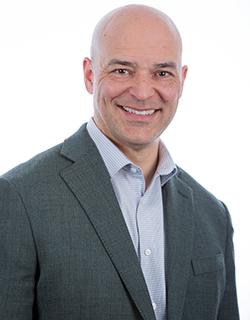
Biography:
Degree in Dentistry from the University of Santiago de Compostela
PHD In Oral Pathology and Health by the University of Sevilla
Thesis Award of the Autonomous Community of Galicia for Academic Excellence
Postgraduate training in Periodontics and Implantology (Madrid); Occlusion and Temporo-mandibular Dysfunction (Valencia) and Orthodontics (University of Santiago de Compostela).
International speaker on Periodontics, Esthetic Dentistry and Multidisciplinary Treatments.
Director of two years Master program in Implants and Implant Prosthesis. UAX University (Madrid, Spain)
Adjunct Assistant Professor of the Department of Prosthodontics at LSUHSC School of Dentistry (New Orleans, Louisiana, USA)
Founder of MEDA Training Center, La Coruña, Spain
Presentation Title: When the 'Impossible' Case Defies Simple Solutions: The Value of Interdisciplinary Care
Some implant dentistry cases are particularly challenging due to severe bone loss, underlying medical conditions, or previous treatment failures. These so-called "impossible" cases often require an interdisciplinary approach to find effective solutions.
By combining expertise from surgery, prosthodontics, periodontics, radiology, and patient care, the dental team can plan and execute treatment more safely and efficiently. This collaborative effort increases the chances of success and leads to better outcomes for the patient. This lecture highlights the importance of accurate diagnosis, strategic treatment planning, and demonstrates how integrating different techniques and specialties can significantly improve the management of complex implant cases
APS 2026 Kenneth Rudd Awardee
Naoki Hayashi
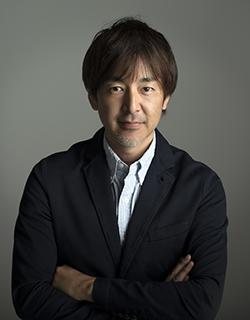
Biography:
Naoki Hayashi RDT, MDT, MDC. Ultimate Styles Dental Laboratory
Naoki Hayashi graduated from Osaka Dental University in 1992. Following his graduation, he worked at the National Dental Laboratory in Japan. Among his notable achievements are two publications that have become valuable resources for both dentists and dental technicians. His first book, "A Diary - Through the Lens”, was published by Quintessence Publishing in 2005, followed by "Past << Future - Envision 77 Heart Beats" in 2010, published by Ishiyaku Publishing.In addition to his books, Hayashi has authored over 80 articles, some of which have been translated into **nine languages** and published worldwide. Currently, he serves as the President and Master Ceramist of Ultimate Styles Dental Laboratory in Irvine, California. Alongside his laboratory work, he conducts lectures and hands-on workshops around the world, sharing insights into the latest trends in dental technology and treatment planning. Since 2002, he has also been an international instructor and advisor for Kuraray Noritake Dental Inc. Further solidifying his contributions to the field, Hayashi became an Associate Member of the American Academy of Esthetic Dentistry (AAED) in 2018*and was honored as a Fellow of the AAED in 2024. His ultimate goal is to apply the most advanced techniques in esthetic porcelain restorations, delivering results that exceed dentists' expectations and fulfill patients' esthetic needs. However, his journey does not end here. Naoki Hayashi continues to work alongside highly skilled and talented technicians, striving for excellence in every aspect of his craft. With a deep commitment to education and innovation, he dedicates his efforts to passing on his extensive knowledge and expertise to the next generation of dental professionals.
Presentation Title: Esthetics Redefined: Creating Smile with Personality
With esthetics playing a major role in treatment plans, restorations are almost unacceptable if they are not esthetically magnificent. Dentists and dental technicians have the potential to lighten the future of all patients by brightening up their smiles. It only requires a mere fraction of their time to permanently provide a positive result for the rest of their patients’ lives. We need to keep in mind that our works are very crucial to give patients healthier results. There are several options available to accomplish functional and esthetic restorations successfully. However, all options may not be accepted by patients. Our biggest responsibility is to achieve the optimal result with the selections that the patient makes. In order to achieve this, there are a few things that we need to keep in mind: Communication with the patient is absolutely essential, and selection and knowledge of the appropriate restoration material and restoration type is crucial. A successful treatment result entails an esthetically acceptable restoration that subtly blends with the remaining teeth. At the same time, however, the patient must see a dramatic change as a result of this restoration. This lecture will present the diagnostic clinical discussions and then move on to the proper steps to attain unified goals between patients, doctors, and technicians through our daily clinical cases.
Irene Marron-Tarrazzi
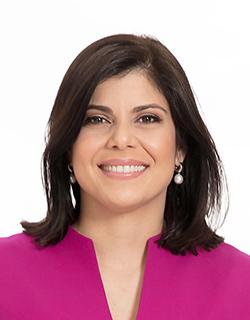
Biography:
Dr. Marron-Tarrazzi is a Periodontist with a full-time private practice in Miami’s Brickell neighborhood. She earned her dental degree from Nova Southeastern University (NSU) and completed her post-doctoral training at UNC-Chapel Hill. In addition to her practice, she is a Clinical Assistant Professor in the Post-Graduate Periodontics Program at NSU.
Dr. Marron-Tarrazzi is the recipient of numerous awards, including Florida Dentist of the Year, NSU Alumni of the Year, and the National Lucy Hobbs “Woman-to-Watch” Award. She made history as the youngest Vice President of the American Dental Association and is a Diplomate of the American Board of Periodontology.
Beyond clinical practice, she remains actively engaged in dental leadership.
She previously chaired the FDI Women Dentists Worldwide section and currently serves as Vice-Chair of the FDI Membership Liaison and Support Committee
Nuria Otero
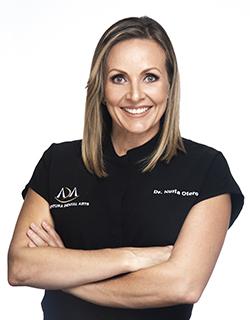
Biography:
Dr. Nuria Otero is an internationally recognized prosthodontist and expert in aesthetic and implant dentistry, dedicated to achieving natural, long-lasting smiles. Originally from Venezuela, she established a highly successful dental practice before relocating to Miami, where she is now a partner at Aventura Dental Arts and an Adjunct Clinical Professor at Nova Southeastern University in the Periodontal Postgraduate Program.
Dr. Otero earned her Certificate of Advanced Graduate Studies (CAGS) in Prosthodontics in 2002 and a Master of Science in Dentistry in 2004 from Boston University’s Goldman School of Dental Medicine, where she was honored with the David Baraban Award for academic and clinical excellence.
With over 25 years of experience, Dr. Otero specializes in full-mouth aesthetic reconstructions, porcelain veneers, ceramic restorations, and implant dentistry, utilizing cutting-edge techniques and materials to deliver exceptional results. She is particularly known for her expertise in soft tissue management and interdisciplinary treatment planning, ensuring long-term stability and harmony in complex esthetic cases.
Dr. Otero is an international speaker and published author, presenting at prestigious conferences and institutions worldwide, including Boston University, Columbia University, the Florida Dental Convention, and the Taipei Congress of Oral Implantology. Her work has been featured in leading dental journals such as The International Journal of Periodontics & Restorative Dentistry (Quintessence) and in books like Aesthetic Dental Strategies by Stefano Inglese.
Passionate about education and innovation, Dr. Otero actively engages with the dental community through social media, live interviews, and virtual masterclasses. She is a member of Seattle Study Club, the American Dental Association, and the Florida Dental Association.
Currently, Dr. Otero continues to push the boundaries of aesthetic dentistry, mentoring the next generation of specialists while transforming her patients’ smiles and confidence.
Follow her on Instagram: @dranuriaoteroofficial
Presentation Title: Backstage Pass: Behind the Scenes of Esthetic Success
Exceptional esthetic outcomes don’t happen onstage; they’re crafted behind the scenes. This dynamic, interdisciplinary presentation pulls back the curtain on the clinical and strategic decisions that drive success in anterior implant and tooth-borne restorations. Through the lens of the prosthodontist and the periodontist, the course explores what it truly takes to design and execute seamless, natural-looking results in the most demanding zone of the mouth. From soft tissue sculpting to cervical design, provisionals to timing, each “scene” is intentionally choreographed to achieve stability, harmony, and esthetic excellence.
With detailed clinical cases as the narrative thread, this course showcases how collaboration, biological respect, and thoughtful sequencing transform complex situations into opportunities for elevated care. The patient may be the star, but it’s the backstage work that makes the magic happen.
Learning Objectives:
- Identify key interdisciplinary strategies for achieving esthetic success in anterior implant and tooth-borne restorations.
- Recognize the importance of provisionals, cervical design, and soft tissue sculpting in the long-term esthetic outcome.
- Apply sequencing principles and collaborative decision-making to navigate complex anterior situations with predictability.
- Translate backstage principles into real-world protocols that enhance treatment planning and execution across specialties.
Ricardo Mitrani
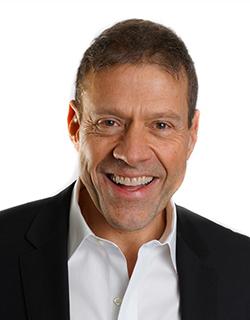
Biography:
Presentation Title: The Power of Prognosis. What Longitudinal Outcomes Reveal About Patient Engagement and Interdisciplinary Thinking
In this closing lecture marking the final session of the American Prosthodontic Society as we know it, Dr. Ricardo Mitrani reflects on decades of interdisciplinary care through the lens of longitudinal case outcomes. Drawing from a series of complex recalls, this presentation explores how prognosis is shaped not only by clinical variables, but also by the patient’s cognitive, emotional, and behavioral readiness. The session will challenge traditional views of planning and communication, urging us to reconsider what it truly means to offer — and honor — a prognosis.
Learning Objectives:
- Recognize the behavioral, emotional, and cognitive factors that influence prognostic accuracy in interdisciplinary treatment planning.
- Evaluate long-term case outcomes through a multidimensional lens that includes both clinical data and patient engagement.
- Apply more effective communication strategies when discussing prognosis with patients and colleagues in team-based care.
Eduardo Nicolaievsky
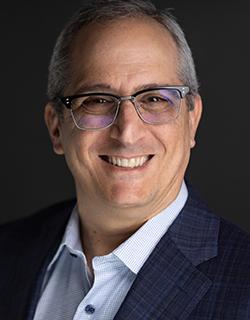 Biography:
Biography:
Practice limited to Oral & Maxillofacial Surgery in Miami Florida
Diplomate of the Am. Board of Oral & Maxillofacial Surgery
Chief of Oral & Maxillofacial Surgery at the Mount Sinai Medical Center in Miami Beach Florida
Director of the ZAGA Center, Miami FL
Director of the X NAV Excellence Center in Miami Florida
Fellow AAOMS, Fellow ACOMS, Fellow ITI
International Lecturer
Presentation Title: Beyond Precisions; A Comprehensive Approach to Implant Dentistry with Dynamic Navigation
Learning Objectives:
- Establish the importance of the digital flow with the different components for diagnostic and planning purposes
- Discuss the Restorative Concept as an indispensable framework for the surgical procedure
- Dynamic Navigation as a team approach
- Implementation of Dynamic Navigation in the daily dental practice
- Review the concept of Dynamic Navigation as a treatment philosophy
- Present clinical applications beyond implant dentistry.
Panos Papasryridakos
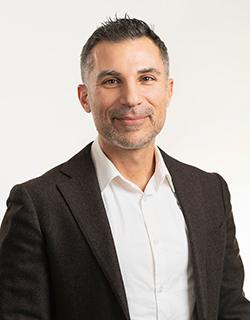 Biography:
Biography:
Dr. Panos Papaspyridakos serves as an Associate Professor of Postgraduate Prosthodontics at Tufts University School of Dental Medicine and as Adjunct Associate Professor at the University of Rochester Eastman Institute for Oral Health. Additionally, he maintains a full-time private practice limited to Prosthodontics and Implant Dentistry in Boston. Dr. Papaspyridakos has authored more than 100 articles and book chapters in peer-reviewed journals and textbooks and he lectures extensively in national and international dental meetings, while he serves as reviewer for several dental journals. His innovative clinical implant research is widely cited and has received international acclaim with educational awards, including the 2022 American College of Prosthodontists (ACP) 1st Prize Award for Best Clinical Article of the year. He is a fellow of the International Team of Implantology (ITI) and the Greater New York Academy of Prosthodontics (GNYAP).
Presentation Title: How to Prevent and Manage Implant Complications and Full-Arch Esthetic Disasters Using Digital Workflows
The effectiveness of treating partially and fully edentulous patients with moderately rough surface implants and implant-supported fixed dental prostheses has been scientifically and clinically validated. However, the routine treatment of these patients with implant prostheses has resulted in an associated increase in implant complications. Comprehensive treatment planning is key to avoiding or mitigating the prevalence of implant complications and esthetic disasters with implant therapy.
Digital approach from diagnostic data collection and digital planning to surgical implant placement as well as prosthetic rehabilitation will be illustrated through clinical cases and supported by scientific evidence from multicenter clinical trials how to avoid and manage the incidence of implant complications.
Learning Objectives:
- Streamline the treatment planning process for complex rehabilitations.
- Understand the risk factors that are correlated to esthetic, biologic and technical complications.
- Utilize digital protocols to prevent and manage complications and esthetic disasters.
Alessandro Pozzi
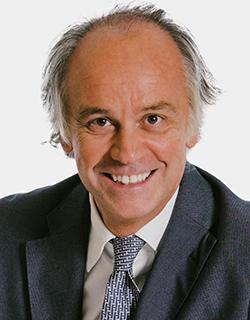 Biography:
Biography:
Prof Alessandro Pozzi DDS PhD has been in practice since 1997. Specialist in Oral Surgery, Specialist in Orthodontics and TMJ dysfunctions. He’s licensed by the Italian General Dental Council of Rome and by the UK General Dental Council of London. Associate Professor at University of Rome Tor Vergata Adjunct Clinical Professor Department of Periodontics and Oral Medicine at the University of Michigan School of Dentistry. Adjunct Associate Professor at Augusta University, Dental College of Georgia, USA. Lecturer Harvard School of Dental Medicine, Department of Restorative & Biomaterials Sciences, USA. In 2020, he was entitled with the Fellowship status of the Academy of Osseointegration (AO) for his commitment to the field of Osseointegration. In the 2023 he achieved the Dual-Specialist Diploma in Surgical and Prosthetic Implant Dentistry, Academy of Osseointegration (AO). In 2024, he achieved the prestigious membership of the American Academy Esthetic Dentistry. Dr Pozzi is widely published, and international awards winner for his clinical research. Besides lecturing internationally, he is the founder of the Pozzi Institute in Rome, one of few qualified international centers that meet Academy Osseointegration’s strict academic and clinical criteria, where he has been training colleagues from all over the world. He is recognized as a global expert in digital implant dentistry and advanced technologies, as navigation and robotics, focusing on the surgical and prosthetic aspects of the full arch digital treatment with FP1 and AllonX protocols. He emphasizes advanced digital technologies to personalize treatment planning according to the functional and esthetic needs of the patients. Instagram @profpozzi Facebook @alessando.pozzi.184
Presentation Title: Advanced surgical and prosthetic technologies for FP1: Planning for Failure or Success
All-on-X and cutting bone off is not the only approach for all the patients in need of a full arch rehabilitation. A personalized, AI driven treatment plan will be presented to precisely execute digital planning, implant placement and immediate loading, reconfiguring the bone and soft tissue interface for FP1 Prostheses. Navigation technology leads guided surgery and immediate post-op digital impression to empower the immediate loading with the highest level of accuracy, reliability, and predictability, for the treatment of complex scenarios as total edentulous and terminal dentition patients.
New algorithms enhance the decision making and the accurate execution of a personalized prosthetically and soft tissue driven implant positioning, making more predictable in the daily basis the immediate delivery of digitally designed FP1 prosthesis emulating the natural dentition without any pink supportive interface. A step-by-step evidence-based dissertation of all the digital, surgical and prosthetic aspects will characterize the overall lecture and the drive the attendees to understand the ultimate digital, surgical and prosthetic protocols, materials and technologies for FP1
Learning Objectives:
- FP1 vs All-on-X more than 15 years of digital and clinical challenges
- Advanced Digital Planning Protocols based with multiple anatomic structures segmentation
- Navigation Surgery
- Advanced Immediate loading with intra-operative navigation impression
- Full arch impression with different digital technologies: IOS, Photogrammetry, Navigation Photogrammetry, intraoral-Photogrammetry
- Esthetically and Biologically driven Definitive FP1 Full arch Prostheses
Milko Villarroel
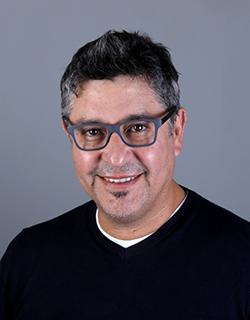 Biography:
Biography:
PhD in Restorative Dentistry from Araraquara Dental School, São Paulo State University - Brazil.
Master of Science degree in Integrated Clinical from Ponta Grossa Dental School, Ponta Grossa State University - Brazil.
DDS from Valparaiso Dental School. Valparaiso University - Chile.
Scientific director of Villarroel Education
Member of the Brazilian Society of Aesthetic Dentistry.
Dr Villarroel is a co-author of five dental books and several articles on the prosthodontics, esthetic and restorative dentistry area.
Private practice in Curitiba-Brazil, the focus of his clinical work is limited to esthetic restorations, prosthodontics, periodontics and implants.
The Evolution of Restorative Materials in Oral Rehabilitation: Today and Tomorrow
This conference aims to examine the ongoing evolution of restorative materials used in oral rehabilitation, bridging the gap between established practices and emerging technologies. With constant advancements in material science, digital workflows, and biocompatibility standards, dental professionals are presented with new opportunities and challenges in selecting and applying restorative solutions.
The dental market offers a great range of new materials for the fabrication of dental restorations, which brings new options but also generates new questions about which system to choose.
Learning Objectives:
- Compare the mechanical, optical, and biological properties of conventional and modern restorative materials.
- Evaluate recent innovations such as 3D-printed resins, and hybrid ceramics in clinical practice.
- Promote evidence-based decision-making in the selection and application of restorative materials for improved patient outcomes.
- Foster interdisciplinary dialogue about trends and future needs in oral rehabilitation.
